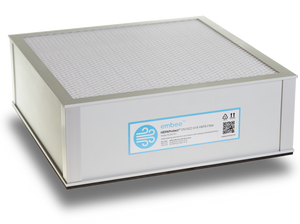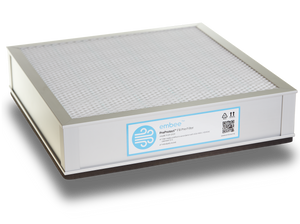香港差劣的空氣質素所帶來的致命影響
香港的空氣污染是一種被人忽視的健康和環境危機,為居民的健康帶來了沉重負擔。世衛估計,在全球室外空氣污染每年導致420萬人過早死亡,其中東南亞和西太平洋地區的負擔最大。
該死亡率是由於接觸直徑為2.5微米或更小的微細懸浮粒子(PM2.5)而引起的,這些物質會導致心血管和呼吸系統疾病以及癌症。據估計,大約3%的心肺疾病和5%的肺癌死亡可歸因於全球的懸浮粒子污染。
香港PM2.5水平長期高於世衛指標
世衛的PM2.5微細懸浮粒子污染的年度平均限值為15μg/m³ :
- 在2019年,在香港追蹤該數據的16個污染監測站中,每一個都超標。
世衛對PM2.5微細懸浮粒子污染的每日平均限值為25μg/m³。 每年最多可以超標3天:
- 在2019年,中西區監測站有110天超過此水平。
沒有安全水平
值得留意的是,這些限值並不代表安全水平,現時尚未確定任何不會對健康造成負面影響的安全水平
例如,一項日本研究表明,在平均PM2.5水平僅為12μg/m³的2年期間,每增加10μg/m³的水平會使心臟驟停(心臟病發作)的風險增加3-4%。
Embee建議您監控身處位置的污染水平並安排戶外活動的時間,以便在污染水平過高時減少接觸。 您可以在此處監視香港地區和中小學的當前水平和建議:
對香港居民的健康有甚麼影響?
香港空氣質素欠佳,為居民帶來沉重的健康負擔:
據估計,香港每年有6300人死於室外空氣污染,即平均每天有17人死亡。香港中文大學公共衛生及基層醫療學院
死因主要是心臟病、中風、其他心血管和呼吸系統疾病以及癌症。
「因呼吸系統及心血管疾病入院及過早死亡的人數與嚴重空氣污染之間有著重要的關連」香港衛生防護中心
懷孕期間的空氣污染與早產、死胎、胎兒生長受損和出生畸形包括心臟瓣膜異常和顎裂有關。
香港的空氣污染來自哪裡?
- 與普遍的看法相反,香港大部分空氣污染是在本地產生的。
- 航運是最大的源頭,發電站、柴油車輛和建築工程機械也是主要來源。
- 香港容許貨櫃船在香港水域和停泊時燃燒廉價和骯髒的硫含量0.5%的燃料。
- 這是歐洲、北美、韓國和中國的長江/西江地區以及海南沿海排放控制區的0.1%限制的5倍。
- 在路邊,柴油車輛和建築工程機械是主要來源。
在Embee的空氣監測網站可以清楚看到,當地的污染源導致附近的空氣質素變差:

以下是指向香港空氣污染倡儀/慈善組織、相關政府網站、投訴污染表格以及有關個別污染物的更詳細資訊的其他連結。
香港空氣污染相關的倡議或慈善團體
-
Clean Air Network
CAN's vision is to build a Hong Kong with clean air through policy change, knowledge building, and collaboration. -
Clear The Air
Clear the Air (CTA) is committed to the introduction and implementation of measures to significantly reduce air pollution in Hong Kong, through advocacy and education.
相關香港政府網站
- Environmental Protection Department
https://www.epd.gov.hk - Government air quality information for residents
https://www.gov.hk/en/residents/environment/air/ - Centre for Health Protection - the Health Effects of Air Pollution
https://www.chp.gov.hk/en/healthtopics/content/460/3557.html
投訴污染
- Smokey vehicle complain form
https://cd.epic.epd.gov.hk/EPICCOM/smoky/ - General pollution complaints
https://www.gov.hk/en/residents/environment/public/?subcat=enquiries
Particulate Matter (PM) affects more peoples' health than any other pollutant.
It consists of billions of tiny particles (PM2.5 is about 1/30 the width of a human hair) made of everything from nitrates and ammonia to black carbon and mineral dust.
Primary sources in Hong Kong are ships, trucks, coal power stations in Lamma and Castle peak, and construction activities
PM2.5 particles are so small that when inhaled, they can pass directly into your bloodstream, and then around your body to organs including the brain.
There is strong evidence linking PM2.5 pollution levels to heart disease, cancer, strokes, and COPD.
PM2.5 has health impacts even at very low concentrations – no threshold has been identified below which no damage to health is observed.
(O3)
A highly reactive gas formed by other pollutants from ships, vehicles and power stations reacting with sunlight.
Ozone is the primary contributor to the "smog" most people associate with air pollution.
Short-term effects:
- Shortness of breath, wheezing, coughing, and inflammation of the airways.
- Asthma attacks and increased risk of respiratory infections.
- Increased hospital admissions for those with COPD, asthma, and other lung diseases.
Longer-term effects:
- Development of asthma in adolescents and reduced lung function.
- Higher risk of death from respiratory diseases.
- Low birth weight and decreased lung function in newborns.
An acidic gas generated during combustion in ships, vehicles, and power stations.
NO2 along with other NOx also reacts with other chemicals in the air to form both particulate matter and ozone
NO2 is toxic at levels >200 μg/m³, causing significant inflammation of the airways.
Typical immediate effects include:
- Shortness of breath, wheezing, coughing, and inflammation of the airways.
- Increased risk of respiratory infections.
- Asthma attacks.
- Increased hospital admissions for those with COPD, asthma, and other lung diseases.
Reduced lung function and development of asthma is linked to NO2 levels that are commonly experienced in Hong Kong.
SO2 irritates the eyes and respiratory system, aggravates asthma and chronic bronchitis, and makes people more prone to infections of the respiratory tract.
When SO2 levels are high, hospital admissions and deaths from cardiac disease increase.
- Ambient (outdoor) air pollution WHO
- Health Effects of Particulate Matter. WHO
- Developing an Instrument for Assessing the Health and Economic Impacts of Air Pollution in Hong Kong - Final Report. School of Public Health and Primary Care The Chinese University of Hong Kong
- The Health Effects of Air Pollution. Centre for Health protection, Department of Health, The Government of the HKSAR.
- Short-term exposure to ambient fine particulate matter and out-of-hospital cardiac arrest: a nationwide case-crossover study in Japan
https://www.thelancet.com/journals/lanplh/article/PIIS2542-5196(19)30262-1/fulltext




